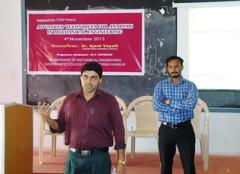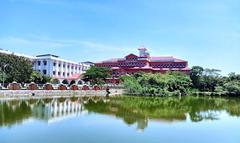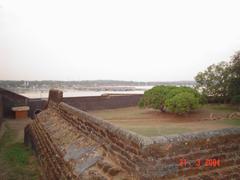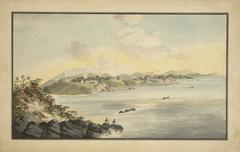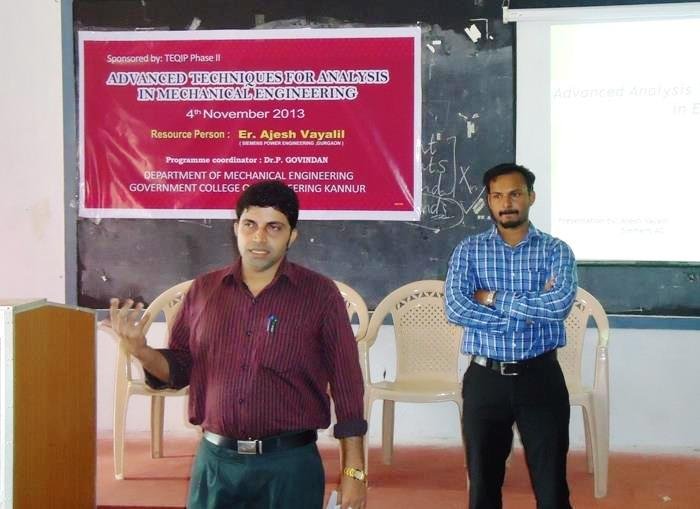
Comprehensive Guide to Visiting Baby Beach, Thalassery, India
Date: 19/07/2024
Introduction
Nestled along the Malabar Coast in the historic town of Thalassery, Baby Beach is a captivating blend of natural beauty, rich history, and cultural significance. Known for its serene environment and picturesque views of the Arabian Sea, Baby Beach is a must-visit destination for those seeking both relaxation and a deep dive into India’s colonial past. Thalassery, also called Tellicherry, has been a pivotal port town since the early centuries, playing a significant role in the spice trade, particularly pepper, which drew the attention of European traders (Kerala Tourism). The town’s strategic importance is further underscored by the establishment of the Thalassery Fort by the British East India Company in 1708, marking the beginning of British dominance in the region. Baby Beach, located near this iconic fort, emerged as a popular recreational spot during the British colonial period, offering a tranquil retreat for British officers and their families. The beach’s name is believed to derive from its relatively small size, making it an ideal and safe spot for children and families. Beyond its colonial legacy, Baby Beach is also steeped in cultural significance, often used as a training ground for circus performers, lending Thalassery its moniker as the ‘Cradle of Indian Circus’ (The Hindu). Furthermore, the beach played a notable role in India’s struggle for independence, serving as a venue for public meetings and gatherings organized by freedom fighters. Today, Baby Beach stands as a symbol of Thalassery’s rich heritage, attracting visitors who come to enjoy its natural beauty and delve into its historical narratives.
Table of Contents
- Historical Background
- Visitor Information
- Accessibility and Travel Tips
- Special Events and Guided Tours
- Preservation Efforts
- Conclusion
- FAQ
Historical Background
Early History and Colonial Influence
Thalassery, also known as Tellicherry, is a town with a rich historical tapestry, and Baby Beach is an integral part of this narrative. The town’s history dates back to the early centuries when it was a bustling trade center. Thalassery’s strategic location along the Malabar Coast made it a significant port for spice trade, particularly pepper, which was highly sought after by European traders.
The Portuguese were the first Europeans to establish a foothold in Thalassery in the early 16th century. However, it was the British East India Company that left a lasting impact on the town. In 1708, the British established a fort in Thalassery, known as the Thalassery Fort, which played a crucial role in their trade and military operations. The fort’s construction marked the beginning of British dominance in the region, and it became a hub for pepper and cardamom trade (Kerala Tourism).
Development of Baby Beach
Baby Beach, located near the Thalassery Fort, emerged as a recreational spot during the British colonial period. The beach’s proximity to the fort made it a convenient location for British officers and their families to relax and enjoy the scenic beauty of the Arabian Sea. The name “Baby Beach” is believed to have originated from its relatively small size compared to other beaches in the region, making it a safe and ideal spot for children and families.
Cultural Significance
Thalassery is often referred to as the “Cradle of Indian Circus” due to its historical association with the circus industry. The town produced many renowned circus artists who performed internationally. Baby Beach, with its open spaces and scenic backdrop, was often used for circus training and performances. This cultural aspect added to the beach’s charm and historical significance (The Hindu).
Role in the Freedom Struggle
Thalassery played a notable role in India’s struggle for independence. The town was a center for nationalist activities, and many freedom fighters hailed from this region. Baby Beach, being a popular public space, often served as a venue for public meetings and gatherings organized by freedom fighters. These meetings were crucial in mobilizing the local population against British rule and spreading the message of independence.
Post-Independence Era
After India gained independence in 1947, Thalassery, including Baby Beach, underwent significant changes. The beach continued to be a popular recreational spot for locals and tourists alike. The Kerala government undertook various initiatives to develop and maintain the beach, ensuring it remained a clean and attractive destination.
Modern-Day Significance
Today, Baby Beach is not just a historical site but also a symbol of Thalassery’s rich cultural heritage. The beach attracts numerous visitors who come to enjoy its serene environment and learn about its historical importance. The nearby Thalassery Fort, which is now a protected monument under the Archaeological Survey of India, adds to the beach’s allure, offering visitors a glimpse into the town’s colonial past (ASI).
Visitor Information
Visiting Hours and Tickets
Baby Beach is open to visitors throughout the day, with no specific visiting hours. There is no entry fee, making it an accessible and attractive destination for both locals and tourists.
Nearby Attractions
- Thalassery Fort - A significant historical site located near Baby Beach.
- Muzhappilangad Drive-in Beach - Famous for being India’s only drive-in beach.
- Overbury’s Folly - A picnic spot with scenic views of the Arabian Sea.
Accessibility and Travel Tips
How to Reach
Thalassery is well-connected by road and rail. The nearest airport is Kannur International Airport, approximately 24 km away.
Best Time to Visit
The ideal time to visit is from October to March when the weather is pleasant.
Special Events and Guided Tours
Special events such as cultural festivals and circus performances occasionally take place at Baby Beach. Guided tours of Thalassery, including Baby Beach and Thalassery Fort, are available through local tour operators.
Preservation Efforts
Efforts to preserve Baby Beach and its surroundings have been ongoing. Local authorities and community organizations have been actively involved in maintaining the beach’s cleanliness and promoting its historical significance. Educational programs and guided tours are often organized to educate visitors about the beach’s history and its role in Thalassery’s development.
Conclusion
Baby Beach in Thalassery is more than just a picturesque coastal spot; it is a historical landmark that reflects the town’s colonial past, cultural heritage, and role in India’s freedom struggle. Its development from a recreational spot for British officers to a modern-day tourist attraction underscores its enduring significance in Thalassery’s history. Visitors to Baby Beach can not only enjoy its natural beauty but also delve into the rich historical narratives that have shaped this unique destination.
FAQ
- What are the visiting hours for Baby Beach? Baby Beach is open throughout the day with no specific visiting hours.
- Are there guided tours available at Baby Beach? Yes, guided tours are available through local tour operators.
- Is there an entry fee for Baby Beach? No, there is no entry fee for visiting Baby Beach.
Call to Action
Plan your visit to Baby Beach and explore the rich history of Thalassery. Follow us on social media for more updates and travel tips.
References
- Kerala Tourism. (n.d.). Thalassery Fort. Retrieved from https://www.keralatourism.org/thalassery/thalassery-fort-kerala.php
- The Hindu. (2019, March 6). Thalassery: The cradle of Indian circus. Retrieved from https://www.thehindu.com/news/national/kerala/thalassery-the-cradle-of-indian-circus/article26448969.ece
- Archaeological Survey of India. (n.d.). Thalassery Fort. Retrieved from https://asi.nic.in/
